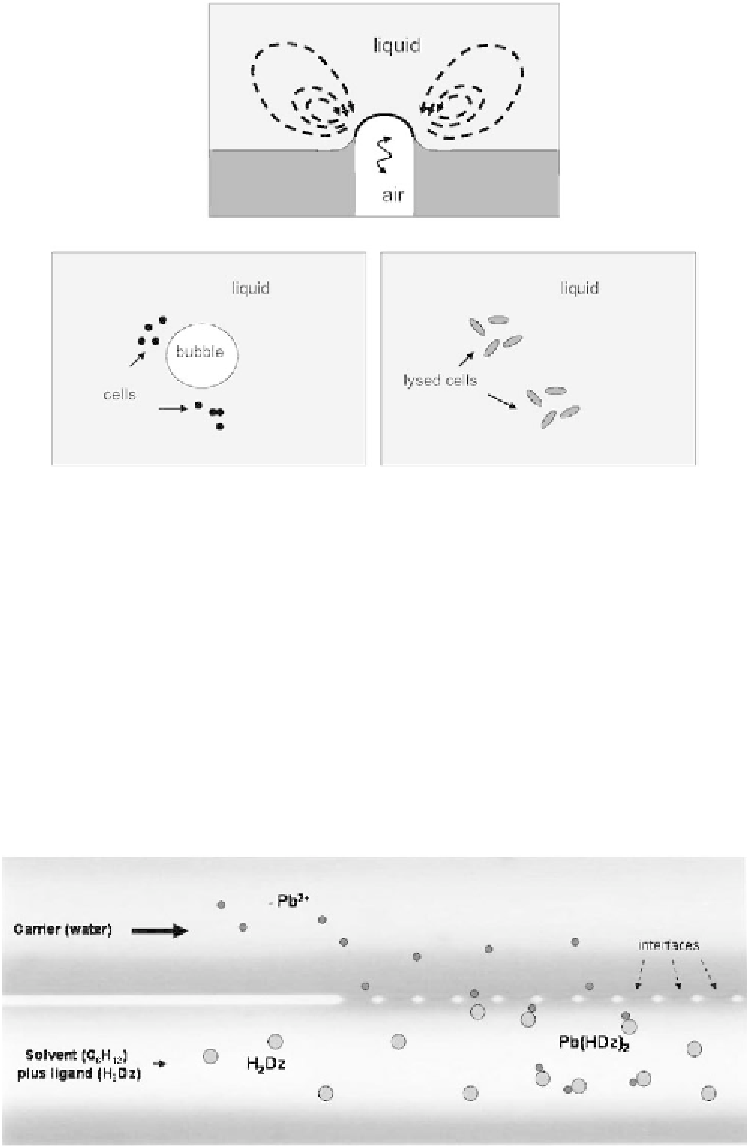Biomedical Engineering Reference
In-Depth Information
Figure 4.47
(a) Mixing in a liquid by acoustic actuation of the air-water interface [41]; (b) cell lysis
caused by the collapse of a gas bubble [42].
achieve the concentration of the targeted species [44-48]. Usually targets do not
spontaneously cross the interface separating the two liquids; they are captured at
the interface by a chemical reaction called complexation (e.g., they bind to ligands
transported or diffused in the secondary liquid). Figure 4.48 shows the principle of
LLE for the extraction of lead ions from water.
In this particular case, the interface between the two fluids is stabilized by mi-
cropillars [48].
The principle is very attractive, but the difficulty lies in the interface stability. In-
terface stability is not granted: instabilities of the Rayleigh-Taylor type contribute to
Figure 4.48
Principle of LLE of lead in water: when lead ions transported by the water phase meet
dithizone ligands transported by the secondary phase at the water/solvent interface, they form a
complex that is trapped in the solvent.


























